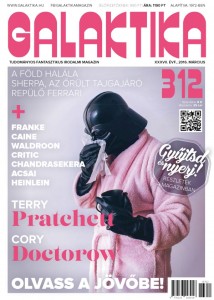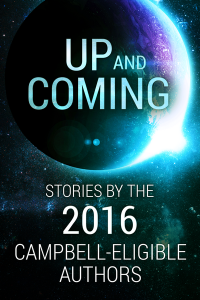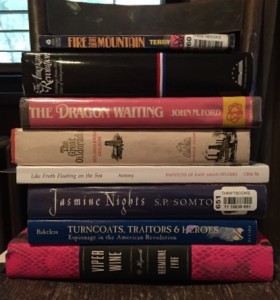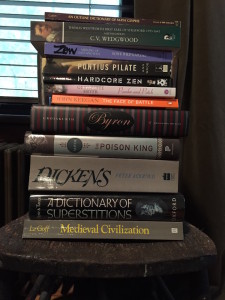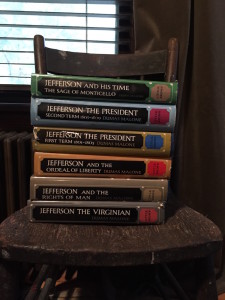Well!
And so there it is. A new story.
Unlike most stories, which need at most a short headnote, what this one really wants is a bibliography. And an apparatus criticus.
Here they are. Enjoy, O ye pendents of this fallen world!
The story’s title is an infamous remark made by James I/VI at the Hampton Court Conference. The two earliest printed editions (1604 and 1638) of The summe and substance of the conference, which, it pleased his excellent maiestie to have with the lords, bishops, and other of his clergie, (at which the most of the lords of the councell were present) in his maiesties priuy-chamber, at Hampton Court. Ianuary 14, 1603 report his remark with slightly different wording and spelling. I’ve picked out my favorite bits from each to make a composite version.
All dates in these notes and the text are Julian, or Old Style. All direct quotations and close paraphrases are from works in the public domain; biblical quotations are from the Wycliffe translation, with spelling sometimes modernized. While I have taken pains not to explicitly contradict anything known to be true (except as noted below), I am not a historian and have omitted many facts that happen to have been preserved; and all the material has been treated fictionally — for the excellent reason that this is a work of fiction.
Specifically:
Sections I & II. Henry, James, Richard, and Thomas Waklee (or Wakelee, Wakely, Waklyn, Walklee, Wakle, Whately, Wacklea, Wackly, Whacklea, etc.; at that time spelling names consistently was not a virtue much striven for) are all documented as living in New England about 1635 (give or take two years), but only Thomas’s name appears on a passenger list, departing Weymouth, in Dorset, 31 March 1634 aboard the Recovery bound for Massachusetts Bay (Robert Charles Anderson, The great migration, ser. 2, vol. VII, pp. 188-193). That these men were related by blood seems probable, but the exact nature and degree of their relation must, absent new evidence, remain conjectural, as must their origins in England. James is said to be a weaver in tax records (see XXVII below).
III & IV. James’s wilderness incident, and how Henry led him to safety, is adapted from a story in Henry Reed Stiles, History of ancient Wethersfield, pp. 686–687. The “shining things” are described in a deposition in Charles J. Hoadley (editor), Records of the colony or jurisdiction of New Haven, vol. II, pp. 86–87.
V & VI. Rev. Stone’s sermon at the mustering in Hartford is adapted from Captain Edward Johnson, Wonder-working providence of Sion’s savior in New England, pp. 112–113; he was chaplain to the expedition. Henry was awarded land in Hartford for his volunteer service in the Pequot War and additional land for another period of service shortly after (James Shepard, Connecticut soldiers in the Pequot War of 1637, p. 31). Reading the history of the conflict, it is hard to escape the conclusion that Uncas, lacking the power to kill his political enemies, manipulated the English into doing it for him.
VII, VIII, IX. Henry married Sarah Burt, widow of Judah Gregory, 4 September 1649 (Clarence Almon Torrey, New England marriages prior to 1700) in Springfield — then in Connecticut colony — but soon removed to Stratford, where he was one of the original settlers. Their children are named in Donald Lines Jacobus, History and genealogy of the families of Old Fairfield, vol. I, p. 628. Henry’s remarks about providence are adapted from an anonymous pamphlet, New Englands first fruits; in respect first of the conversion of some, conviction of divers, preparation of sundry, of the Indians, pp. 36–39 (corrected pagination; original has two signatures with duplicate page numbers).
X. James’s remarkable record of litigation, and the peculiar circumstances of his marriage to the Widow Boosey, are documented in Arthur Adams (editor), Records of the Particular Court of Connecticut, pp. 28-30, 43, 45, 46, 49, 51–53, 62, 63, 69–72, 74, 88–91, 99–102, 106, 108, 116–120, 132, 174, 179, 195, 196, 222, 224, 227, 229, 232–236, 240, 244.
XI. Dr. Rossiter’s report on the autopsy he performed on Elizabeth Kelly is preserved in the witchcraft supplement of the Samuel Wyllys papers, printed in David D. Hall, Witch-hunting in seventeenth-century New England, pp. 154-155; see also the comments in the Journal of the American Medical Association, vol. 21 (1893), pp. 661-662. I also wish to thank Anatoly Belilovsky for pointing me in the right direction about the retrospective diagnosis.
XII. Sarah F. McMahon presents an admirable quantitative analysis of the colonial New England diet in “A comfortable subsistence: The changing composition of diet in rural New England, 1620-1840,” in The William and Mary quarterly, ser. 3, vol. 42 (1985), pp. 26–65.
XIII. For the “fine midsummer’s frolic,” see, for example, James George Frazer, The golden bough: A study in magic and religion, chap. LXVII, sec. 5: “The midsummer fires” (pp. 720–732 in the one-volume abridgment). Those present are named in Rebecca Greensmith’s confession (see XXII–XXV below). James was a constable in Wethersfield: Stiles, Wethersfield, p. 309. On 14 May 1677, Alice Waklee was fined £40 — a sum sufficient to purchase a small farm — for selling two gallons of liquor to Indians (Helen S. Ullmann [editor], Hartford County, Connecticut, county court minutes, p. 220). She confessed to selling one gallon, and there is no reason to suppose that this was a new enterprise of hers.
XIV. The hearsay that Henry listens to is based on depositions excerpted and summarized in Gale Ion Harris, “William and Goodwife Ayres: Witches who got away,” The American genealogist, vol. 75, no. 3 (July 2000), pp. 197–205. The water test is reported in Increase Mather, An essay for the recording of illustrious providences, reprinted in George Lincoln Burr (editor), Narratives of the witchcraft cases 1648–1706, p. 21.
XV. The story James tells the children is adapted from one told by John Higginson in a letter to Increase Mather (Mather papers, Collections of the Massachusetts Historical Society, ser. 4, vol. 8, pp. 285–286).
XVI. Henry was appointed in November 1659 to “watch over the youths or any disorderly carriages in the time of public exercises on the Lord’s Day or other times and see that they behave themselves comely, and note any disordering persons by such raps or blows as he in his discretion shall see meet” (Samuel Orcutt, A history of the old town of Stratford, p. 167). The story of Goody Bassett is also from Orcutt, p. 148.
XVII & XVIII. The administration of Wethersfield harbor is described in Sherman W. Adams’s essay “The maritime history of Wethersfield,” in Stiles, Wethersfield, chapter XII, pp. 536–595. James’s route home is based on the admirable map published by the Wethersfield Historical Society, drawn by Arthur C. Willard and W. Dudley Birmingham (February 1951) from data in Stiles and Adams, op., as they say, cit. Sarah’s lumber pies are based on a recipe in Robert May, The accomplisht cook or, the art & mystery of cookery, pp. 222–223. For puppydog-water, see Pepys’s diary (Latham and Matthews edition), vol. V, p. 78 (8 March 1663/64) and the note in vol. X, p. 605; the formula is from Mary Evelyn, The ladies dressing-room unlock’d, and her toilette spread, together, with a fop-dictionary, and a rare and incomparable receipt to make pig, or puppidog-water for the face.
XIX. In colonial America, the untimely death of a child was an almost universal experience. Although there’s no record that any of Henry’s children died young, only the names of those to survive to adulthood are known, and Stratford vital records have not been preserved complete.
XX. Ann Cole’s strange behavior is described in Mather, Illustrious providences, pp. 17–21, which is based on a letter (4 December 1682) from the Rev. John Whiting, who had been an eyewitness twenty years earlier (Mather papers, pp. 466–469). Rev. Stone’s handkerchief was certainly illegal; according to the sumptuary laws still in effect (but widely flouted), no one of an estate worth less than £200 was permitted to own gold lace.
XXI. Usury, though permitted in the New England colonies, as in England, at rates of up to eight percent, was generally regarded as sinful and iniquitous, until the 1699 Cambridge Synod determined that charging interest was consistent with scripture; see Cotton Mather, Thirty important cases resolved with evidence of scripture and reason.
XXII–XXV. The Hartford witch panic is summarized in Charles J. Hoadly, “A case of witchcraft in Hartford” in The Connecticut magazine, vol. 5, no. 11 (November 1899), and chapters VIII and IX of R. G. Tomlinson, Witchcraft prosecution: Chasing the devil in Connecticut. James’s route through Hartford is based on the map drawn by William S. Porter (1838) in Mary Kingbury Talbott and William S. Porter, The original proprietors of Hartford. Thomas Bracey accused James at Katherine Harrison’s 1669 trial (John M. Taylor, The witchcraft delusion of colonial Connecticut 1647–1697, pp. 49–50), but the deponent likely said something similar at this time. The early Hartford prison is described in William DeLoss Love, The colonial history of Hartford, pp. 286–289; he notes: “Some prisoners took with them such articles of furniture as they needed. […] Nathaniel Greensmith had there ‘One Bed well filled,’ ‘One Boulster,’ ‘One Rugg, one Blankett’ and ‘Two Blanketts,’ valued at £6 10s” (frustratingly, Love does not cite a source for his quotations). Rebecca Greensmith’s confession in open court is summarized in Whiting’s letter to Mather, p. 468; her further confession against her husband, herself, and others still exists in the Wyllys papers supplement. James’s opinion of witchcraft, while perhaps not usual, is not anachronistic; see, for example, John Hale’s A modest inquiry into the nature of witchcraft. Similarly, contemporary reaction to homosexual behavior was, despite the rhetoric of sermon and law book, usually quite muted; see Richard Godbeer, “‘The cry of Sodom’: Discourse, intercourse, and desire in colonial New England” in The William and Mary quarterly, ser. 3, vol. LII, no. 2 (April 1995), pp. 259–286. James and Rev. Stone’s arguments about Christmas are adapted from sources quoted in J. A. R. Pimlott, “Christmas under the Puritans” in History Today, vol. 10, no. 12 (December 1960). The accusation against James that Rev. Haines reads is adapted from transcripts of the 1677 trial of Nicholas Sension, of Windsor, Connecticut, quoted in Goober.
XXVI. James first fled to Rhode Island in late December 1662 or early January 1662/63, returned by early July, was indicted again in June 1665, fled again, and this time remained in Rhode Island, forfeiting all his Connecticut assets; I have compressed these movements to a single flight.
XXVII. The lives of Ann Cole, Katherine Harrison, Elizabeth Seagar, and Judith Varlett are epitomized in Tomlinson, Witchcraft. Alice is referred to as “Widow Wakelee” in Wethersfield tax records. Her fence disputes are in Ullmann, Court minutes. James granted power of attorney to Henry, who petitioned to be released from it, and was; and both James and Alice petitioned for divorce, but were refused; see Adams, Particular Court, for this and James’s other legal woes. For Thomas Waklee’s death, see Anderson, Great migration; Cotton Mather also mentions him in Magnalia christi americana. James’s penury is reflected in the token taxes assessed on him (Horatio Rogers, et al. [editors], The early records of the town of Providence, vol. XV, pp. 195, 210; vol. XVII, pp. 47, 51). Matthew Cole’s fate is noted in Hoadly, “Witchcraft.” Rev. Stone’s riparian tumble is actually how his son, also named Samuel Stone, died, but Rev. Stone seemed to me to richly deserve such a fate; see J. Hammond Trumbull, The memorial history of Hartford County, Connecticut 1633–1884, p. 263, quoting John Whiting’s letter to Increase Mather. A letter from the citizens of Rhode Island, complaining of James’s presence, is printed in J. Hammond Trumbull, Public records of the colony of Connecticut, from 1665 to 1678, p. 527.
XXVIII. Henry’s will is abstracted in Jacobus, Fairfield; it is actually dated 11 July 1689, with a codicil added 5 April 1690, and was exhibited 8 November 1690. The quoted legal language is adapted from Peregrine White’s will (1704).
XXIX. James was still alive in early October 1690, when a court ruled in his favor; another court order of May 1691 mentions that he had died recently (Hoadly, Records, pp. 35–36 and 44).
In addition to all the above, I am indebted to these secondary sources:
Alfred A. Cave, The Pequot War.
Gregory Robert Cunningham, The history of the Wakelee family since they were known in America.
John Putnam Demos, Entertaining Satan: Witchcraft and the culture of early New England.
Kai T. Erikson. Wayward pilgrims: A study in the sociology of deviance.
David Hackett Fischer, Albion’s seed: Four British folkways in America.
Richard M. Lederer, Jr. Colonial American English: a glossary.
Walter W. Woodward, Prospero’s America: John Winthrop, Jr., alchemy, and the creation of New England culture, 1606–1676.
